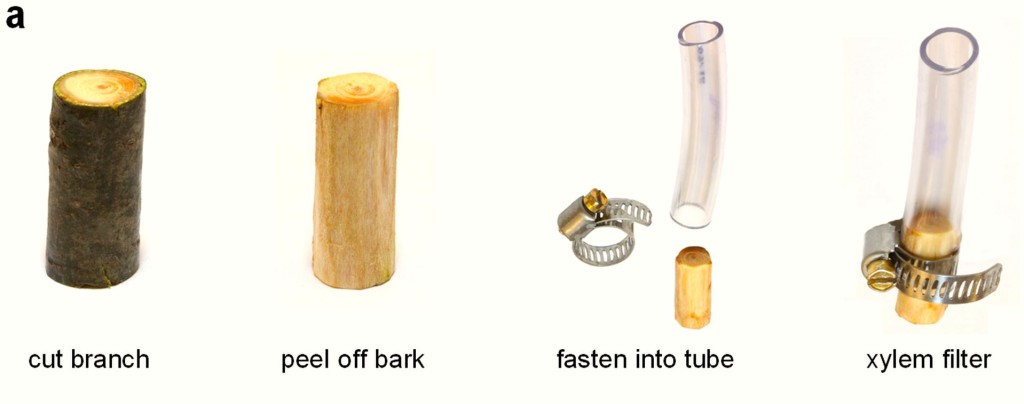 In the continuing search for potable water solutions in developing countries, researchers have turned to plant xylem. Below are the highlights of the just published research paper on this solution. I strongly suggest you read the entire paper if this is of interest to you (link below). If you are in the Cliffs Notes fan club, at least read the abstract and conclusion quoted below, look at the picture, and know the branch should be from a fresh conifer tree to work both safely and effectively (according to the paper). They don’t mention it, but I will, avoid Yews (Taxus spp.) as they are a poisonous conifer.
In the continuing search for potable water solutions in developing countries, researchers have turned to plant xylem. Below are the highlights of the just published research paper on this solution. I strongly suggest you read the entire paper if this is of interest to you (link below). If you are in the Cliffs Notes fan club, at least read the abstract and conclusion quoted below, look at the picture, and know the branch should be from a fresh conifer tree to work both safely and effectively (according to the paper). They don’t mention it, but I will, avoid Yews (Taxus spp.) as they are a poisonous conifer.
I hate disclaimers, but I don’t know enough about the source to validate for wilderness use, so use at your own risk. I will pass all this information along to those entities we have listed under Wilderness Medicine soliciting their input.
Kudos to the researchers for this solution…
From the research article published February 26, 2014 by Michael S. H. Boutilier, Jongho Lee, Valerie Chambers, Varsha Venkatesh, and Rohit Karnik; Water Filtration Using Plant Xylem:
ABSTRACT
Effective point-of-use devices for providing safe drinking water are urgently needed to reduce the global burden of waterborne disease. Here we show that plant xylem from the sapwood of coniferous trees – a readily available, inexpensive, biodegradable, and disposable material – can remove bacteria from water by simple pressure-driven filtration. Approximately 3 cubic cm of sapwood can filter water at the rate of several liters per day, sufficient to meet the clean drinking water needs of one person. The results demonstrate the potential of plant xylem to address the need for pathogen-free drinking water in developing countries and resource-limited settings.
CONCLUSIONS
Plant xylem is a porous material with membranes comprising nanoscale pores. We have reasoned that xylem from the sapwood of coniferous trees is suitable for disinfection by filtration of water. The hierarchical arrangement of the membranes in the xylem tissue effectively amplifies the available membrane area for filtration, providing high flow rates. Xylem filters were prepared by simply removing the bark of pine tree branches and inserting the xylem tissue into a tube. Pigment filtration experiments revealed a size cutoff of about 100 nm, with most of the filtration occurring within the first 2–3 mm of the xylem filter. The xylem filter could effectively filter out bacteria from water with rejection exceeding 99.9%. Pit membranes were identified as the functional unit where actual filtration of the bacteria occurred. Flow rates of about 4 L/d were obtained through ~1 square cm filter areas at applied pressures of about 5 psi, which is sufficient to meet the drinking water needs of one person. The simple construction of xylem filters, combined with their fabrication from an inexpensive, biodegradable, and disposable material suggests that further research and development of xylem filters could potentially lead to their widespread use and greatly reduce the incidence of waterborne infectious disease in the world.



One Response to Water Filtration Using Plant Xylem